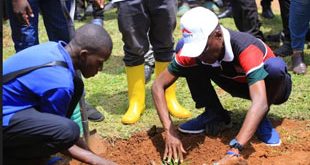
By Ronald Musoke
The UN’s Food and Agriculture Organization (FAO) has launched a multimedia awareness raising campaign on the importance of hygiene and quality in handling of fish in small scale fisheries.
The drive which was prepared with the direct involvement of small scale fishers, fish traders and consumers to educate their peers on the importance of hygiene to preserve fish will be disseminated through the “Clean Fish, Better Life” campaign along 12 major landing sites around Lake Victoria in the districts of Busia, Namayingo, Mayuge and Buikwe.
The initiative comes at a time when different countries, particularly in Africa, are striving to ensure food and nutrition security for their people, in addition to enhancing revenue-generation from fish and fisheries products.
According to FAO, post-harvest losses of fish in the fisheries value chain are a major threat to food security in Africa in general and Uganda in particular especially when you consider the fact that fish provides up to 50% of animal protein for Ugandan households.
The small scale fisheries in Africa are severely affected by losses of quality and quantity along the different value chains— right from the fish net to the dinner plate.
FAO statistical data shows that post-harvest losses in artisanal fisheries in Africa are estimated to range from 30–40 per cent and sometimes even higher.
In Uganda, post-harvest losses of small fish [Mukene] range from 10% in the dry season to 90% in the rainy season and as a result, the losses from this species alone is as much as $1.5 million.
Fresh tilapia traders also lose about 5.2% of their catch to quality issues—amounting to loss of $220,000 annually.
While presiding over the launch of the initiative, Alhaji Momodou Jallow, the FAO Country representative in Uganda said such losses are unacceptable in a country where food insecurity and poverty affects millions of people.
Such high post harvest losses seem to be the norm for Africa, especially in small-scale fisheries production.
He added: “This is unacceptable in a continent marked by food shortages, malnutrition, widespread vulnerability factors, and an increasing population… Reduction of post-harvest fish losses is a necessity, if greater socio-economic benefits are expected from sustainable fisheries exploitation.”
“It is therefore imperative to undertake actions to reduce these losses. This will only be possible if fisher-folk, fish processors, traders, and consumers of fish products value the importance of hygiene and quality in the handling of fish,” he said.
Edward Rukuunya, the Assistant Commissioner in charge of resource management at the agriculture ministry commended the initiative noting that it will go a long way in answering the call for quality and value addition in Uganda’s fish industry.
“The agricultural sector investment plan emphasizes value addition and this initiative has a component for capacity building for the local fisher communities to improve the handling of fish species,” Rukuunya said.
The Ministry of Agriculture Animal Industry and Fisheries (MAAIF) data shows that the fisheries sector contributes 2.5% to Uganda’s GDP and 12% to the agricultural GDP in Uganda, while up to 1.2 million people are employed either directly or indirectly by the sub-sector.
Fish provides high quality food to Ugandans with a per capita consumption of 10 kg which though higher than the Africa average of 8.3 kg is still below the recommended WHO/FAO level of 25 kg.
The country has high potential for fish production with about 20% of its surface area covered by water comprising open waters 46,900 km2, Swamps 7,300 km2 and Rivers 2000 km2.
The total fish production in Uganda is estimated at 560,000 metric tonnes with about 82% (460,000 MT) from capture fisheries and an estimated 18% (close to 100,000 MT) from aquaculture.
Uganda is the biggest supplier of inland fisheries products in Africa with 20.6kg per capita and also earns the biggest GDP per capita at 2.5% according to FAO.
Uganda’s fisheries landscape includes six major lakes (Victoria, Kyoga, Albert, Edward, George and Wamala), over 160 small lakes, a network of rivers, swamps and flood plains most of which can be used to produce fish.
According to the Ministry of Agriculture, Animal Industry and Fisheries (MAAIF), the overall gross value of fish at landing sites in all water bodies in Uganda is estimated to be over US$ 800 million.
Fish exports to overseas markets increased from US$ 5.3 million in 1991 to the highest value of US$ 143 million in 2005 before decreasing to US$ 83.3 million in 2010.
Uganda also exported large quantities of fish to the regional market which with exports fluctuating from US$ 50 million in 2007 to US$ 30 million in 2011.
However, fish supply from Uganda’s water bodies is declining due to a number of factors, including overfishing, degradation of aquatic habitats and climate change, among others.
Recent field studies have, however, shown that improved handling and processing of small fishes lead to reduced losses and increases in value by over 150%.
This initiative is being funded by the European Union and is part of the implementation of the Smart Fish Project, managed by the Indian Ocean Commission, and co-implemented by FAO.
The campaign will include cooking demonstrations from a fish recipe book produced by the project, containing easy recipes for cooking fish using easily accessible local ingredients, and information on how to identify good quality fish and promote hygiene.
Over 500,000 people are expected to be reached by the awareness campaign’s activities directly and dissemination of the participatory video, through the mobile cinema events.
 The Independent Uganda: You get the Truth we Pay the Price
The Independent Uganda: You get the Truth we Pay the Price


